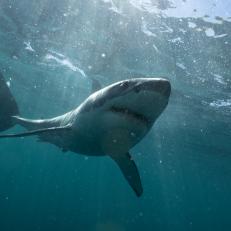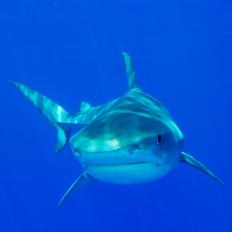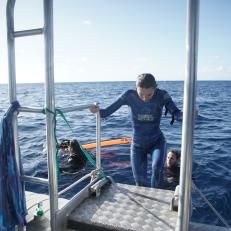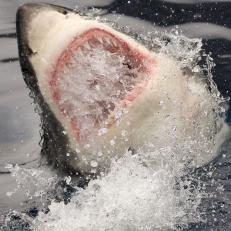Hammerhead Sharks
Learn more about this distinctive shark, named for the unusual shape of it's head.
Hammerhead Sharks
Hammerhead sharks use their head to hunt by pinning their favorite food, stingrays, to the seafloor. They also eat other creatures, such as bony fishes, squid, and lobster.
Hammerhead Sharks
Hammerhead sharks have sensors in its head that help it scan for electrical signals that are given off of creatures’ bodies.
Hammerhead Sharks
Scalloped hammerheads commonly prey on stingrays and aren’t aggressive towards humans.
Hammerhead Sharks
The Northern Rocks, Darwin and Wolf, are considered the best of diving. They can only be reached by an overnight liveaboard from Galapagos main islands. Darwin and Wolf are particularly famous of huge schools of Scalloped Hammerhead Sharks, as well as frequent encounters with the biggest fish, Whale Shark.
Hammerhead Sharks
The great hammerhead can be distinguished from other hammerheads by the shape of its "hammer" (called the "cephalofoil"), which is wide with an almost straight front margin, and by its tall, sickle-shaped first dorsal fin.
Hammerhead Sharks
The great hammerhead is the largest of the 9 species of hammerhead sharks.
Hammerhead Sharks
The great hammerhead shark migrates distances upward of 756 miles alone.
Hammerhead Sharks
Scalloped hammerhead sharks are believed to form huge schools for feeding and reproduction purposes.
Hammerhead Sharks
Bonnetheads are the second smallest hammerhead sharks, averaging 30 to 48 inches.










.jpg.rend.hgtvcom.231.231.suffix/1658256079221.jpeg)












